Wool. Iron. Clay. For centuries, people have been building and furnishing their homes out of these materials, creating everything from chapels in Europe to huts in China with these same basic materials. Though the specifics may change from region to region and time to time, the essentials remain the same, albeit with very different looks, and to some extent serving different purposes.
This month, we're going to focus on a country which had made such creative use of its materials that it has developed a style that has become popular even far from its borders: Mexico.
Just the word Mexico conjures images of a country that is, in Spanish, "mexcla" — a mix of many things together. It is plain matte tile in the colors of the earth, and it is the most vibrant weavings you've ever seen. It is elaborate cathedrals carved from limestone and flat-roofed, one-room adobe homes. It is rough-textured blankets woven on the same kind of loom as was used 600 years ago, and it is a rebozo fashioned from silk smooth enough for a baby.
The most basic material used in Mexico is probably the quarry tile: plain tiles made of the reddish clay found in many parts of the country. This is the least expensive tile to be found, and so it's commonly used, even in some of the cheapest housing. But it's also durable, smooth, and, with the right design, can be warm and elegant.
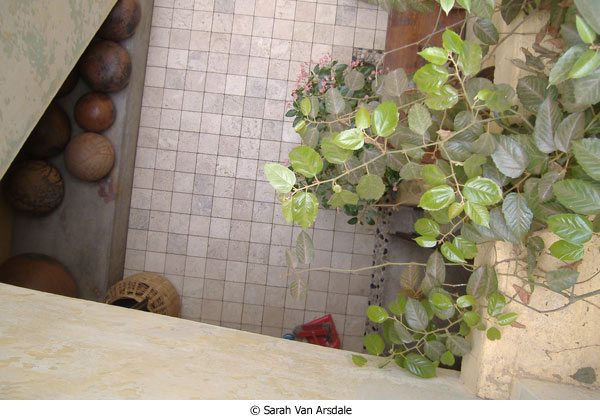
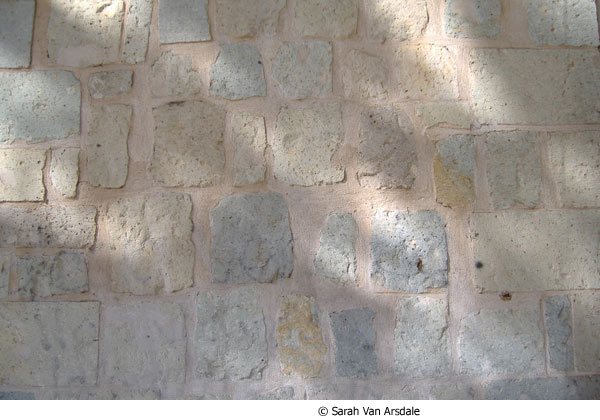
A quarry tile floor dramatically sets off a bright rug woven in brilliantly dyed wool. Just make sure you have a pad underneath, or you're likely to take a tumble.
From quarry tile we can leap to the other end of the tile spectrum without setting foot outside of Mexico — the brilliant, complex designs of Talavera tile can be seen all over the country, from the most au courant restaurants in Mexico City to a 1950s-era roadside motel in Baja, from the kitchens of the middle-class to the front doors of the workers. The tile is everywhere: lining a swimming pool, serving as a backsplash in a kitchen, providing a surprising decorative ribbon along a staircase. There are house numbers in tile, and names spelled out, and pretty, decorative single tiles that give a plain wall a bit of quiet distinction.
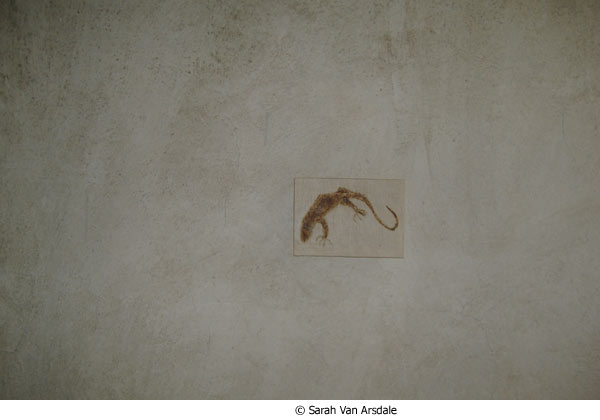
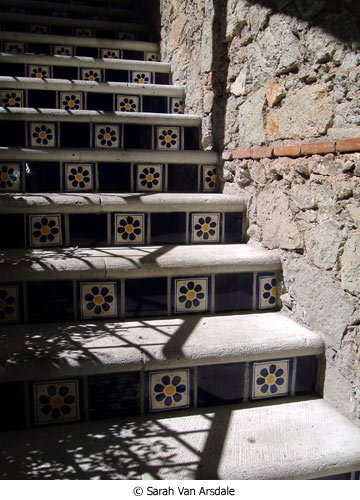
While at first glance you may think such tiles are too particular for your style of home, they come in such an array of colors and designs that if you really want to, you can find something to suit the look you're after. Just remember that an entire wall of tile — even a small wall in a kitchen or bath — will create a lot of pattern. If you do want an entire wall tiled, it's likely it will be a wall with no other decoration on it, except perhaps a simple, elegant mirror in a Mexican silver-tin frame.
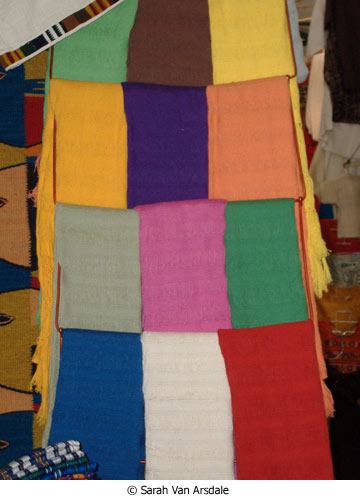
Textiles are a another important material in Mexican design. At first glance, you may think the pretty rebozos worn by the women are simply shawls to keep the night chill off in the mountain climates. But the traditional rebozos, usually more plain and in more somber colors than the bright ones sold to tourists, also are used as a kind of communication, with each tiny village having its own pattern. Walk through a busy regional market with someone from the area, and he'll point o ut which women are from his grandmother's village, just by looking at the subtleties of their rebozos.
Another material used heavily in Mexican design is, of course, metal. Some parts of Mexico, such as the town of Taxco, are known for their silver production, and are the source of the gorgeous silver jewelry you see in many other parts of the world.
Because creating a silver candlelabra or other housewares would be impractical, you often seen tin standing in place of silver in home design. Silver-tin candlelabras are easy to find in Mexico, some of them in beautifully elaborate designs.
Wrought iron is also very popular, and brings a gravitas to the design of any room. A wrought-iron candleabra will bring gravitas to a room, and can be a great way to balance lighter, more ephemeral looks. A room done in "shabby chic," for example, could benefit greatly from a pair of heavy wrought iron candlesticks or a wrought-iron balustrade.
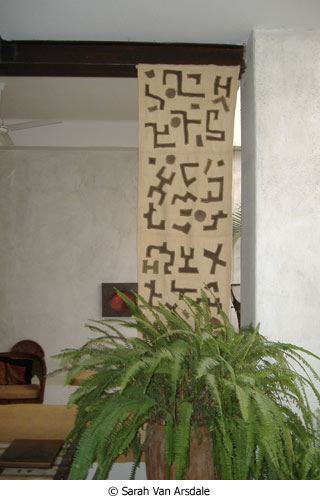
As with the use of any materials, the idea is not to stay with just one, but to mix them so they balance each other and play off each other: A quarry-tile floor in a room with a delicately-carved Victorian settee; a sleek, modern living room all in grey, accented with a bright, traditional rug. Unless you really are dedicated to making a home all-Mexican, it's wise to remember that no matter how great the materials are, out of their element it's easy to overdo any look, so it may be that less is more: a couple of Mexican hand-blown glasses, a bright embroidered throw pillow for your brown sofa. This also gives you an excuse to mix the materials of Mexico with materials from other countries — countries you'll just have to visit in order to learn more about so you can bring home silk curtains from France and glazed pottery from Japan.
The materials of Mexico hold all the mystery, adventure, and history of that country, and bringing them into a home can imbue the home with a sense of the world beyond your own door, the world on el otro lado of the border.







